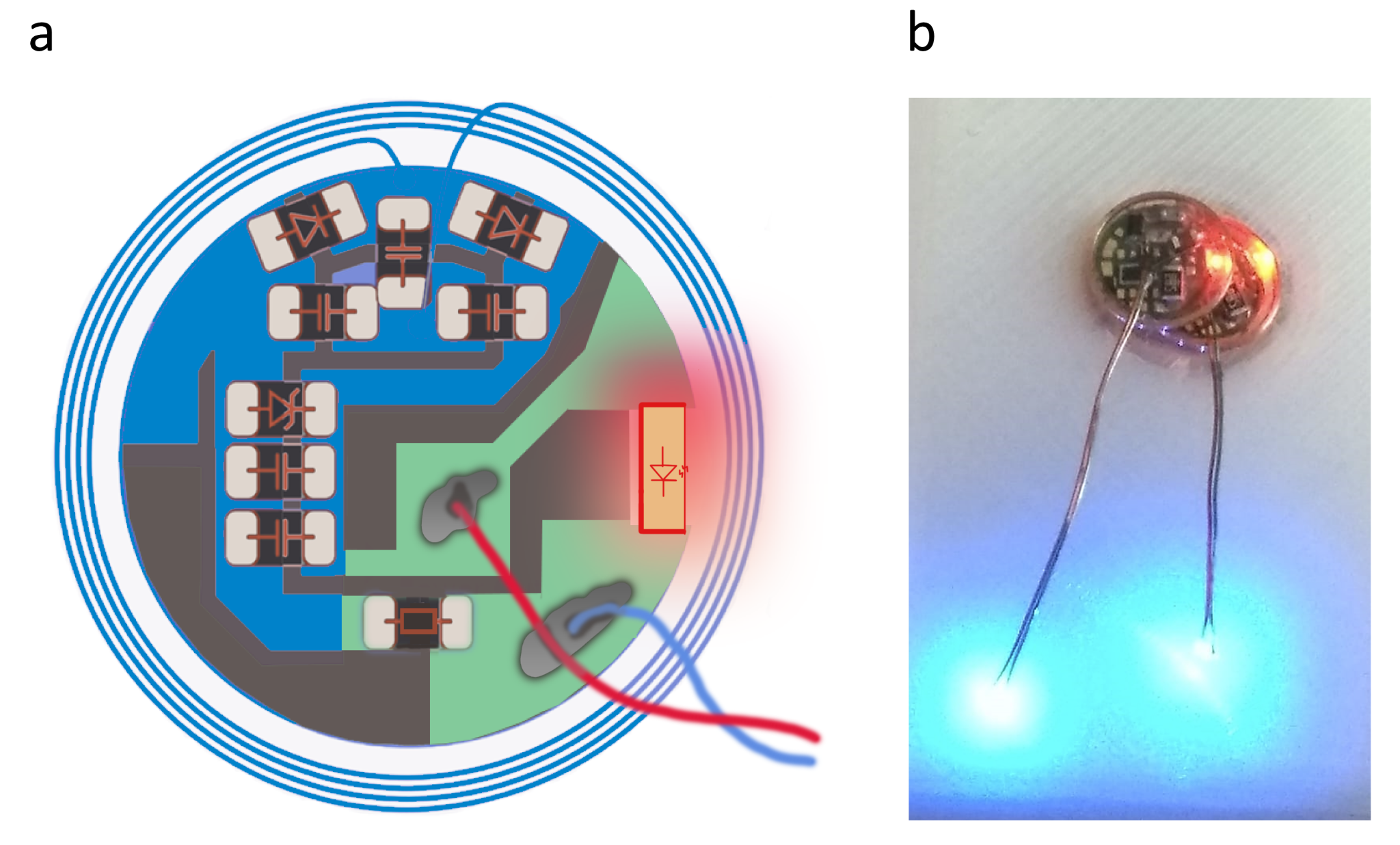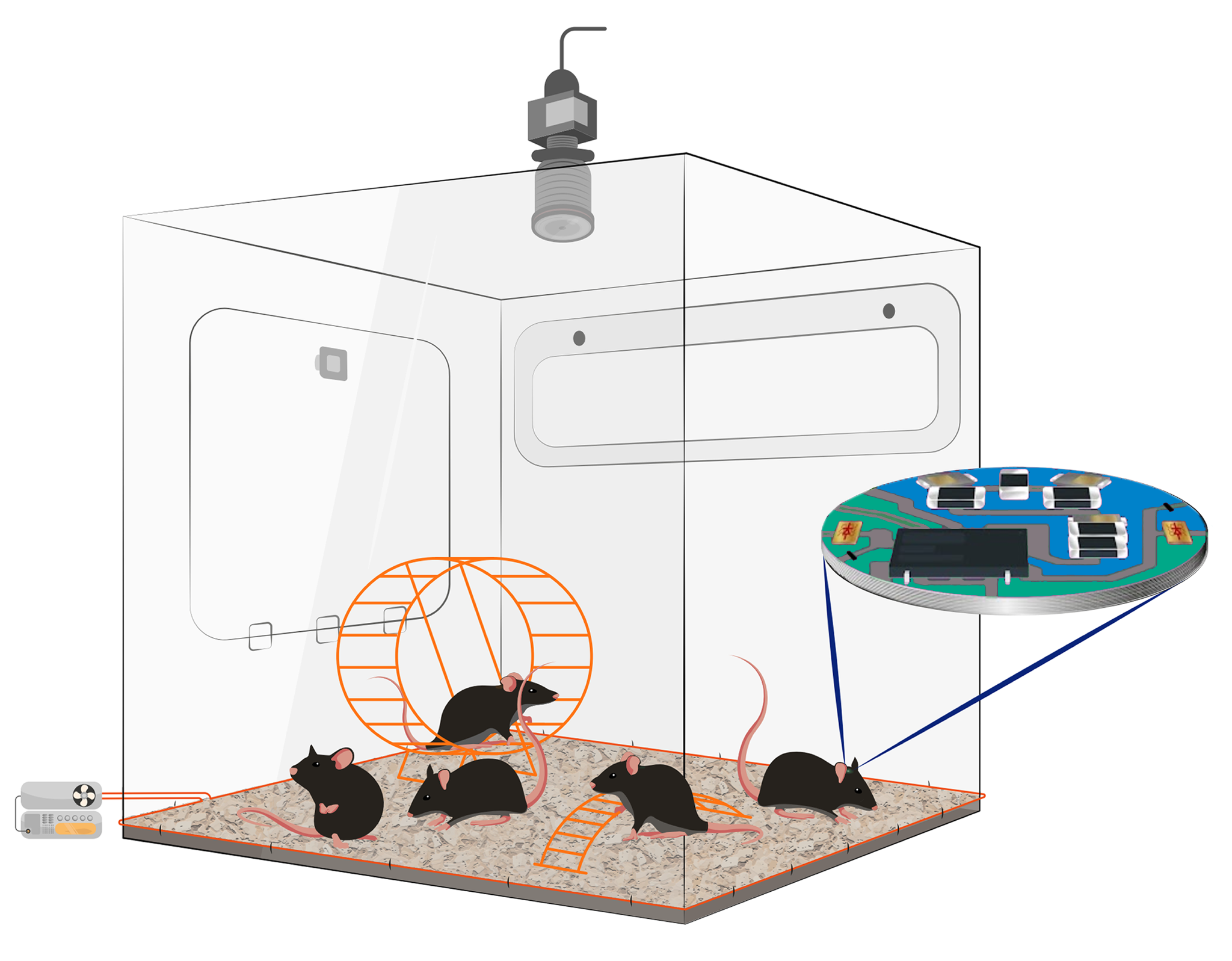Introduction
Understanding the behaviour of mammals can help us identify and treat neuropsychiatric conditions. That’s why we created Powerflex, a versatile and affordable wireless system for studying social behaviour in animals. Our goal with Powerflex is to provide a user-friendly platform that can be easily customized for neuroscience research. It uses wireless power transfer to activate small implants placed under the skin of mammals. These implants can be adjusted to fit different shapes and sizes, and we even developed special optogenetic probes that can be added for optional stimulation. With Powerflex, we can track the movements, positions, and interactions of multiple animals at the same time. This allows us to study their behaviour and responses to stimuli, helping us gain valuable insights into their brain activity. It’s a powerful tool for monitoring and understanding how animals react to different situations, giving us a better understanding of neuropsychiatric conditions.
Technology
PowerFlex is a wireless power transfer system that operates by using the power of magnetic resonance. With PowerFlex, two coils are carefully tuned to resonate at the same frequency, enabling one coil to power another. Our goal is to provide an affordable, open-source solution that can be easily adjusted to various needs. PowerFlex is primarily designed for neuroscience research involving freely moving rodents. It efficiently transfers power from a larger coil to a smaller one, making it ideal for applications with low coupling factors. In this paper, we delve into the core components of PowerFlex and showcase its application in two neuroscience studies.
µLED implants for optogenetics
The setup provides enough power headroom at the implant site to grant the inclusion of various forms of stimulation, including optogenetic stimulation. Given the large losses in light intensity that come with the traditional LED-to-optical-fiber coupling, we developed novel optogenetic probes. These probes consist of bare dies of µLEDs connected to 80 µm thick wires.
Currently, it is used experimentally in two different experimental setups


